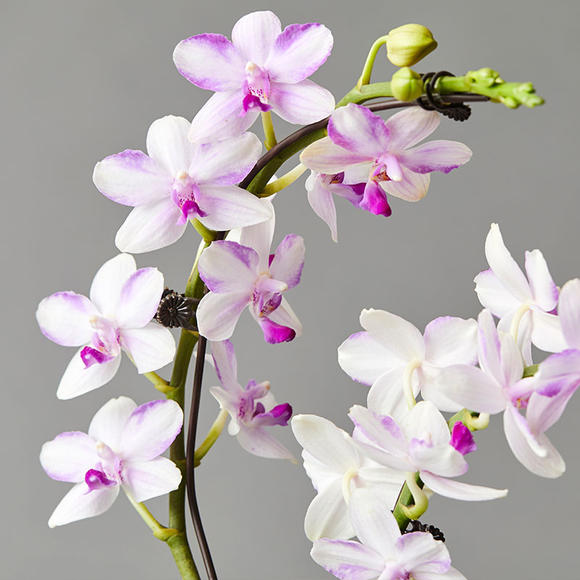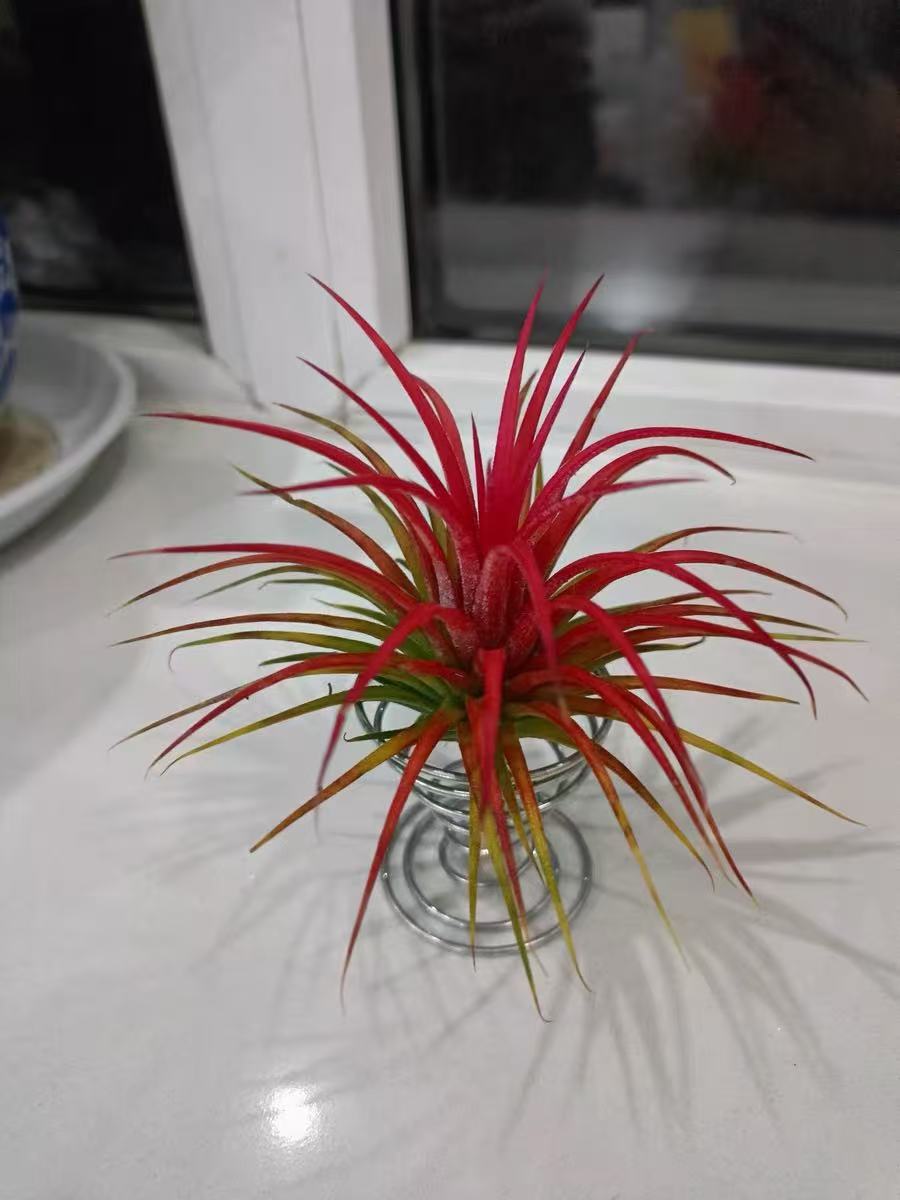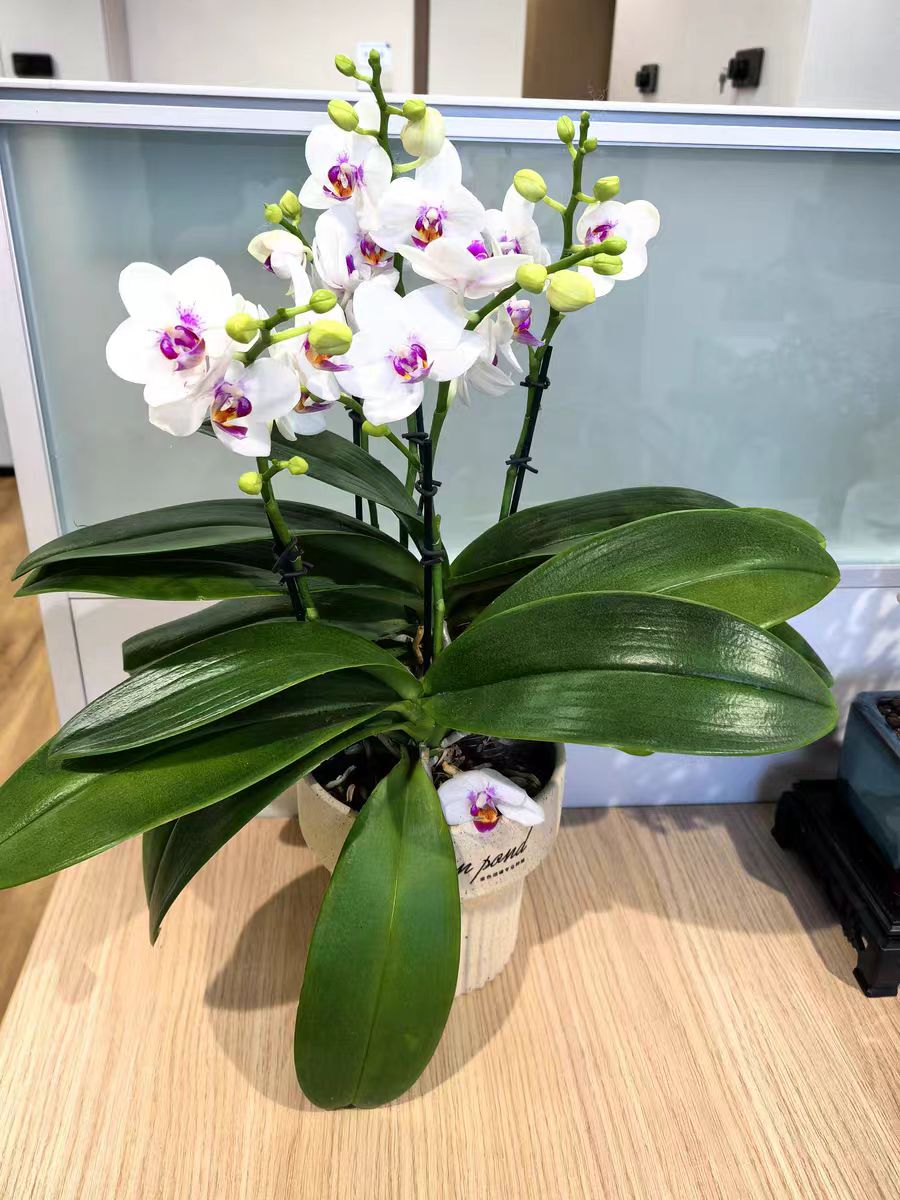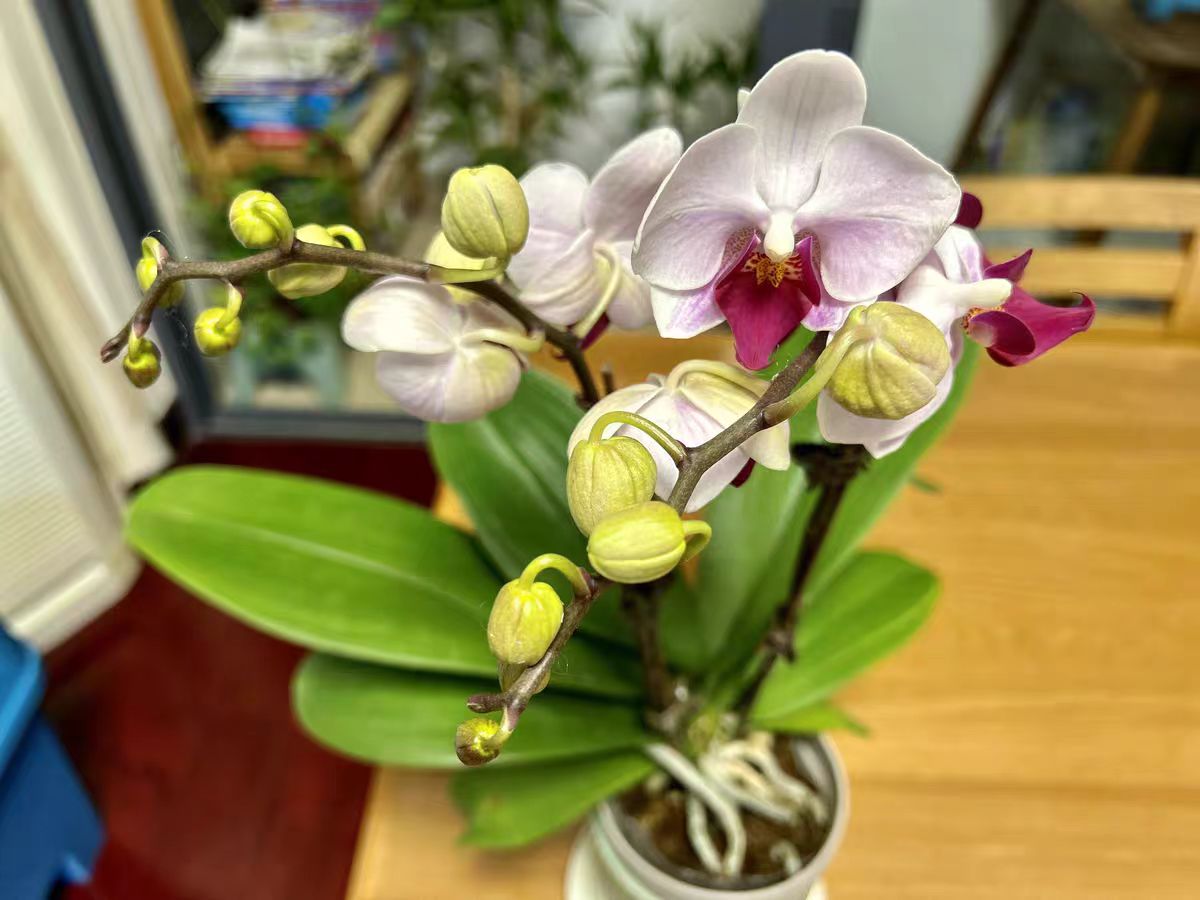Among the numerous colorful and charming flowers, the Crystal Phalaenopsis has become the focus of attention due to its unique charm. Next, let's delve deeper into this beautiful and mysterious flower. The flower shape of the Crystal Phalaenopsis resembles dancing butterflies, light and elegant. Its petals are crystal clear, as pure and flawless as crystals, giving a fresh and refined feeling. Moreover, each Crystal Phalaenopsis has a rich sense of layering, with colors gradually transitioning from the flower core to the petals, which is intoxicating. The Crystal Phalaenopsis is not only beautiful in appearance but also charming in fragrance. Whenever the flowers bloom, a faint fragrance permeates the air, refreshing and pleasant.
During the process of maintaining the Crystal Phalaenopsis, sometimes it is found that the roots turn black. This may be caused by excessive watering, soil compaction or pathogen infection, etc. In response to this issue, we can take the following measures for treatment:
Firstly, excessive watering is one of the main reasons for the blackening of the roots of the Crystal Phalaenopsis. Therefore, during the maintenance process, the amount of watering should be strictly controlled to avoid overly wet soil. The watering frequency and amount can be adjusted in a timely manner according to the growth condition of the plant and seasonal changes. If the soil is severely compacted, it can also cause the roots of the Crystal Phalaenopsis to turn black. At this time, it is necessary to replace the soil in a timely manner. When choosing the soil, a substrate that is loose, breathable and has good drainage can be selected, such as a mixture of perlite, vermiculite and peat soil. For the problem of blackened roots caused by pathogen infection, fungicides such as carbendazim and chlorothalonil can be used for spraying or soaking treatment. Before spraying or soaking, the plant needs to be taken out and cleaned, then the roots are soaked in the fungicide for about 30 minutes, and finally dried and replanted.
In order to allow the Crystal Phalaenopsis to thrive, we need to master the correct breeding methods. Here are some key maintenance techniques: When breeding the Crystal Phalaenopsis, a pot with good air permeability needs to be selected. It is recommended to use lightweight pots made of materials such as pottery or plastic, and place a layer of drainage materials such as crushed stones or ceramsite at the bottom of the pot to enhance the air permeability of the soil. The Crystal Phalaenopsis requires sufficient light for photosynthesis and to produce nutrients. Therefore, during the maintenance process, the plant should be placed in a sunny place, but direct sunlight should be avoided to prevent leaf burns. The Crystal Phalaenopsis likes a warm environment, and the suitable growth temperature is 18 - 28°C. In winter, heat preservation measures should be taken to avoid the plant from being harmed by the cold. At the same time, attention should also be paid to ventilation and avoiding a muggy environment that leads to poor plant growth. During the growth period, the Crystal Phalaenopsis requires sufficient nutrients to support its growth and flowering. Therefore, regular fertilization can be done to supplement nutrients. It is recommended to apply a thin liquid fertilizer or compound fertilizer every about 15 days to meet its growth needs. However, be careful not to over-fertilize to avoid root burning.
In conclusion, as long as we master the correct breeding methods and take good care of our Crystal Phalaenopsis, we can allow them to thrive and bloom the most beautiful flowers!
How to deal with the blackened roots of the Crystal Phalaenopsis?

Share with
Tagged in :




Leave a Reply